In many places across the world, people are thinking out of the box to make their own power-free washing machines to do their daily laundry. The majority of Africans wash their clothes by hand, either in buckets or in streams.
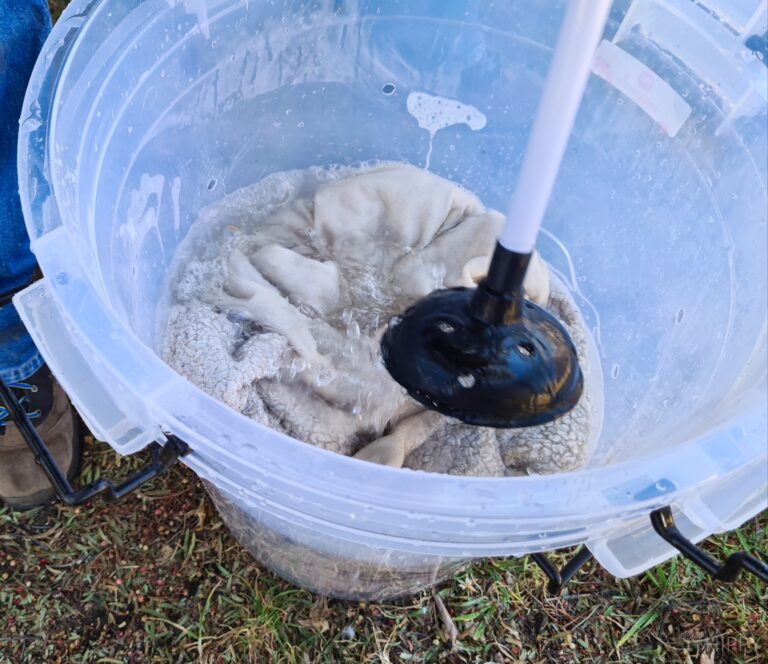
This is because an automatic washing machine from a well-known, popular brand can sometimes be very expensive with product prices ranging from $200 – $300 on the budget-friendly side of things.
Now, that might not sound like much but when you’re living out in the boonies, then that’s a lot of money. So, if you’re facing rough economic times, one way to get around that problem is to make a washing machine yourself.
One of the many benefits of a DIY washing machine is that, apart from being relatively cheap to make, it requires no technical installation. A few buckets and a semi-transparent lid are all you need.
Why Should you Make a DIY Washing Machine?
Well, for starters; regular washing machines, as previously mentioned, are expensive and often require some technical installation – which not everyone can do.
Depending on your design, you can easily make a portable washing machine that can go with you on camping trips or other adventures and be used by a single person without too much trouble…
If you have a limited space constraint, don’t panic; they won’t take up too much space in your home.
These can be made to fit any room size so it’s not going to be an issue if you only have a small room for them. They can easily fit into small areas/spaces – especially if you’ve got a foldable mini washing machine.
This particular design is one of the best portable mini washing machines simply because of how easy it is to make. When making a bucket washer, the gallon bucket, and bucket lid setup is easy to use and is very versatile.
Now, one thing to keep in mind is that, while it’s certainly better than your old bulky washing machine, many DIY washing machines have a limited wash load.
The drying process is also much simpler, just hang your clothes out in the sun; that’s it.
For those who use buckets, they prepare three buckets (although two will suffice). In the first bucket, they wash clothes using bars of soap to remove dirt and stains. The second bucket is to rinse the majority of the soap out, and the third is a final rinse.
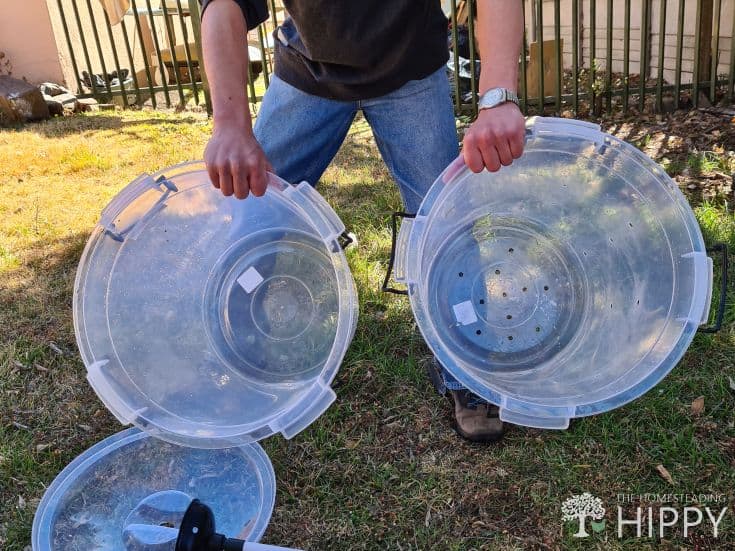
Plumbing is a pipe dream there. People walk for miles carrying their basins and dirty clothes to places where clean water is provided for drinking, bathing, and doing laundry.
Life is harsh, but these people thrive on the sense of community generated by gathering to do their chores. It is a social gathering for adults to laugh and chat, while children play.
I found a few creative ideas for DIY washing machines, and I even made one myself. This simple design is based on two buckets, one of which has some holes drilled in it.
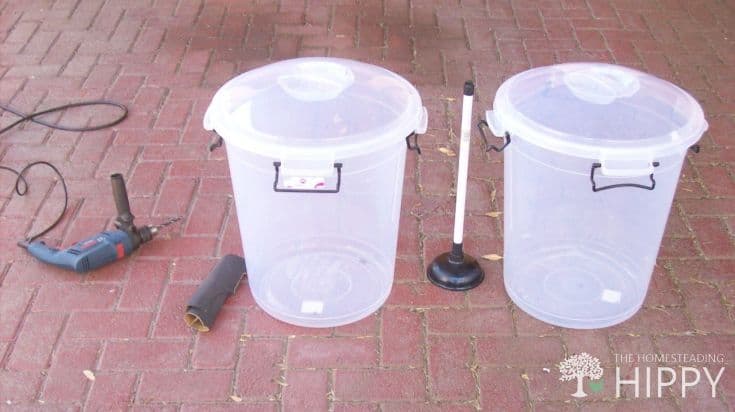
This manual top load mini washing machine is smaller than most standard front load or top load machines and only made from two buckets and doesn’t need electricity! It’s very lightweight and durable and doesn’t make a big mess.
Since it doesn’t use electricity, it’s perfectly safe for continuous usage and it can clean stubborn dirt just as well.
DIY Washing Machine From 2 Buckets
Equipment
- two large 5-gallon buckets
- 1 toilet plunger
- drill
- sandpaper
- A strong rope with a carabiner attached (only if you have a strong tree you can hang the bucket from.
Instructions
- Drill holes down the sides and at the base of only one bucket.
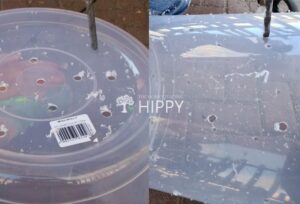
- Use sandpaper to remove rough edges around each hole.
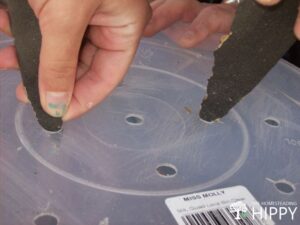
- Drill a hole in the center of one of the bucket lids.
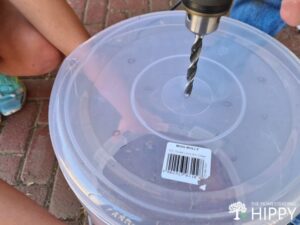
- Drill holes in the rubber of the plunger.
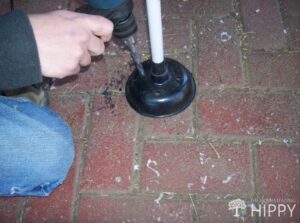
- Feed the plunger's hand through the hole in the lid.
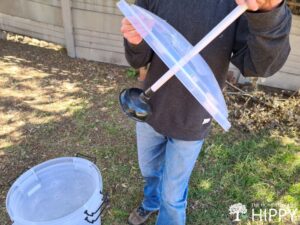
Notes
- You can get the buckets on Amazon or another online shopping platform to which you have access. You can also use an old tub – these would typically weigh a few kg – if you don’t have buckets at hand.
How it Works
Place the bucket with the holes inside the undrilled bucket (the outer body), and add soapy water and detergent. You don’t need much water so there’s no need to fill the bucket to the top and waste a gallon of water to wash your clothes.
Add your dirty laundry.
Put the lid with the plunger on the wash bucket so that the plunger is inside the bucket.
Plunge the plunger up and down for a few minutes.
The holes in the plunger will agitate the water, stirring it up to get to all parts of your clothing, and releasing dirt.
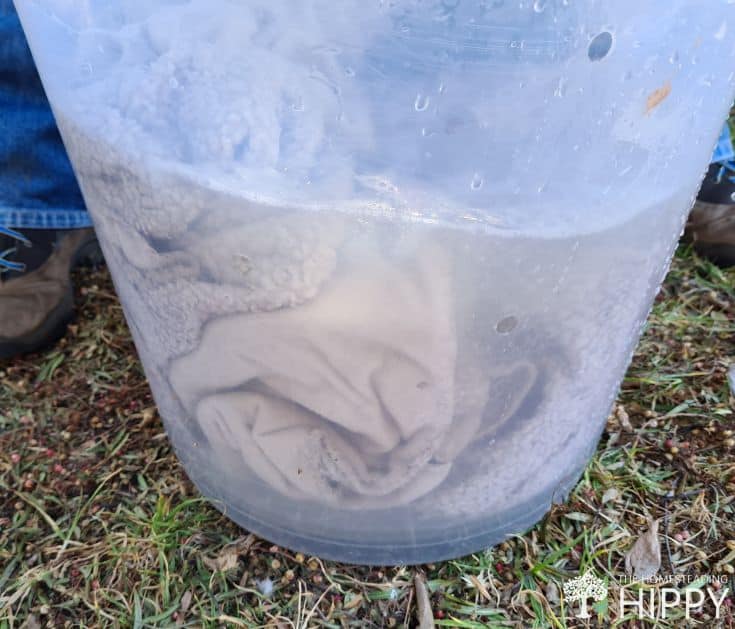
Drain the dirty water by lifting the inner bucket out, and placing it on bricks to drain:
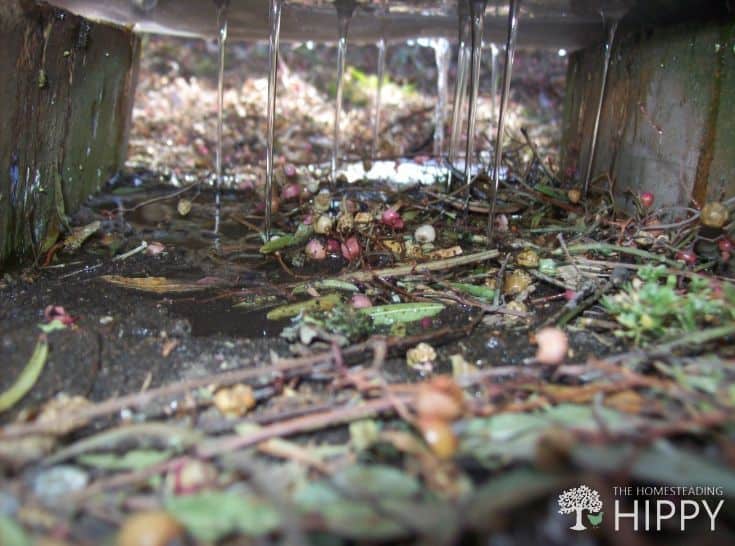
Use the outer bucket as a rinse tank to drain clothes thoroughly by putting it inside the bucket with the holes, and pressing down until no more water comes out:
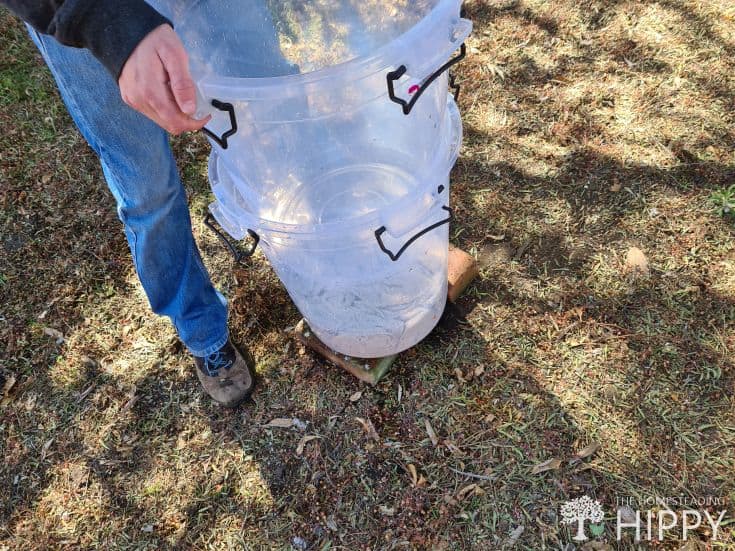
Rinse the wash buckets out, add clean water, and repeat the motion with the plunger to remove soap from your clothes.
You can rinse in this manner as many times as you feel necessary to remove all the soap and detergent residue.. Use the whole bucket again to drain the water from your laundry in the bucket with the holes in it.
(This is the part where a tree would be great, but it is not essential to your chore.)
Hang the bucket from the tree using a rope attached to the handle of the bucket with holes in it. Make sure the tree branch, the rope, and the bucket’s handle are all strong.
Turn the bucket on the rope to really wind the rope tightly. The effect you are going for is very much like twirling the seat of a swing set and then releasing it to work makeshift spin washing cycles rapidly on its own.
Release the bucket and watch as it spins all the excess water from your clothing.
Now you are ready to dry your clothes in the sun. Use the empty washer as a laundry basket so everything dirty is ready to wash. This washer is perfect for apartments, camping, tiny houses, and homesteaders.
Other Designs
Here are some innovative ways to make your own electricity-free washing machine.
This design shows you how to make a hand-cranked washing machine.
This is a slightly more complex way to build a washing machine. It does take up floor space, though, so it is not ideal for apartments.
This last one takes a lot more skill than the washing machine I built as you need to be able to weld to build it.
The creators have found a way to get exercise, release stress, and do the laundry at the same time. This washing machine is pedal-powered using a bicycle to generate the motion for the barrel to spin.
Wrap-Up
Portable home appliances like bucket washing machines are great for single-person usage and have a rust-free body and are a great idea for those who need a way to save space without giving up practicality.
The best part of this mini washing machine is that it’s easy to assemble and use. If you need a portable option that requires less power to operate and want to up your prepping game, then this is the perfect choice for you.
Have you made or are you using a similar off-the-grid washing machine? Are you washing clothes by hand?
Let me and the entire community in the comments below if you have any tips to make this easier or more effective.
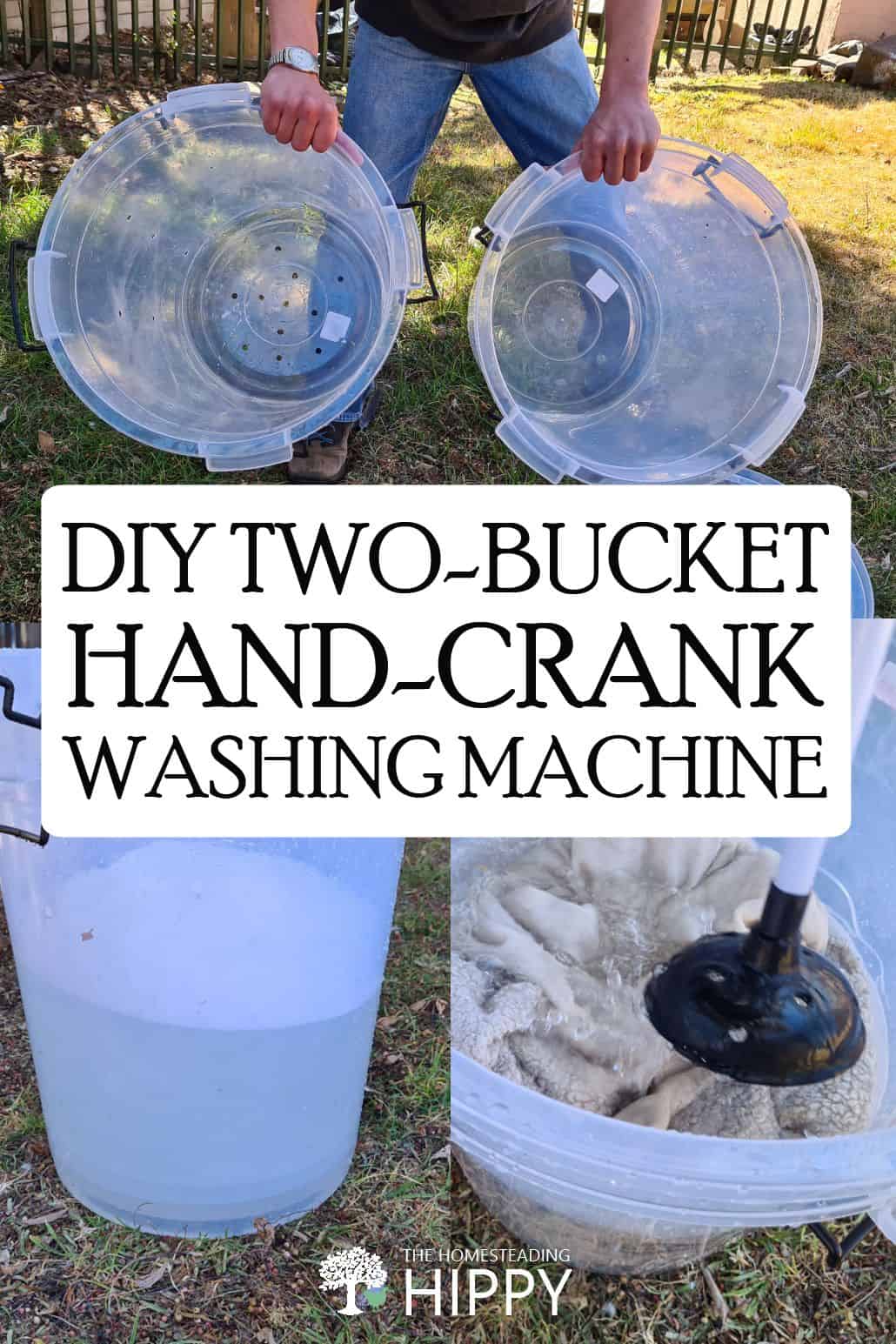
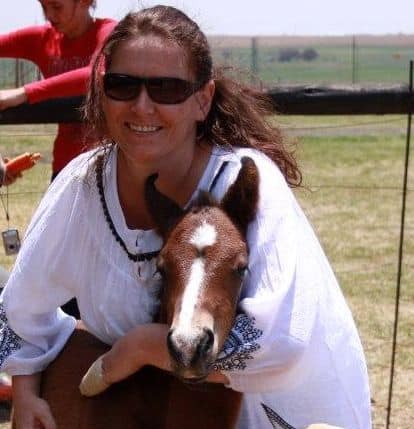
Di-Anne Devenish Seebregts was raised in an environment where daily life consisted of hiking, environmental conservation, growing fruit and vegetables, and raising poultry for meat and eggs.
She combined her passion for the writing word with her love of the pride that comes with not relying on others. She raised three children (who are now adults) to value the environment, and understand the value of being self-sufficient.
Find out more about Di-Anne on our About Us page.


Where did you get your buckets and how big are they?
Looks like they are 50L miss Molly buckets but I can’t see that they are sold on the US.
Any kind will do. I used clear ones to clearly show how they work, but a black outdoor refuse bin will work as well.
They can be any size and can be bought in plastics store, home mart, department store, or hardware store.
I have horse feeding buckets (3) and I will reuse ALL of the water. I will flush toilets with the dirtiest water, bathe with the rinse water, and then use the bath water to flush toilets. Water conservation will be of utmost importance in a grid down situation. I practice it now so that I will be in step if the SHTF.
Thanks for sharing your tips!
I made this when my kids were little,I also used the water to flush the toilet,I reused the rinse water to wash more clothes and to water my flowers, lawn, ectra
You are preaching to the converted so, amen!
What kind of soap did you use?
You can use any machine wash or hand washing soap. You can also use dishwashing liquid or liquid soap. I have even used fabric softener – we went camping and remembered the softener but not the soap – it worked perfectly.
What size are the horse feeding buckets?
Like the idea for off grid living, but not all people of Africa have to live like this. Some parts of Africa are more advanced in living than the rest of the west.
Plumbing is NOT a pipe dream in Africa… Your article would have held its own without you needing to fabricate such condescending statements that are absolutely misleading